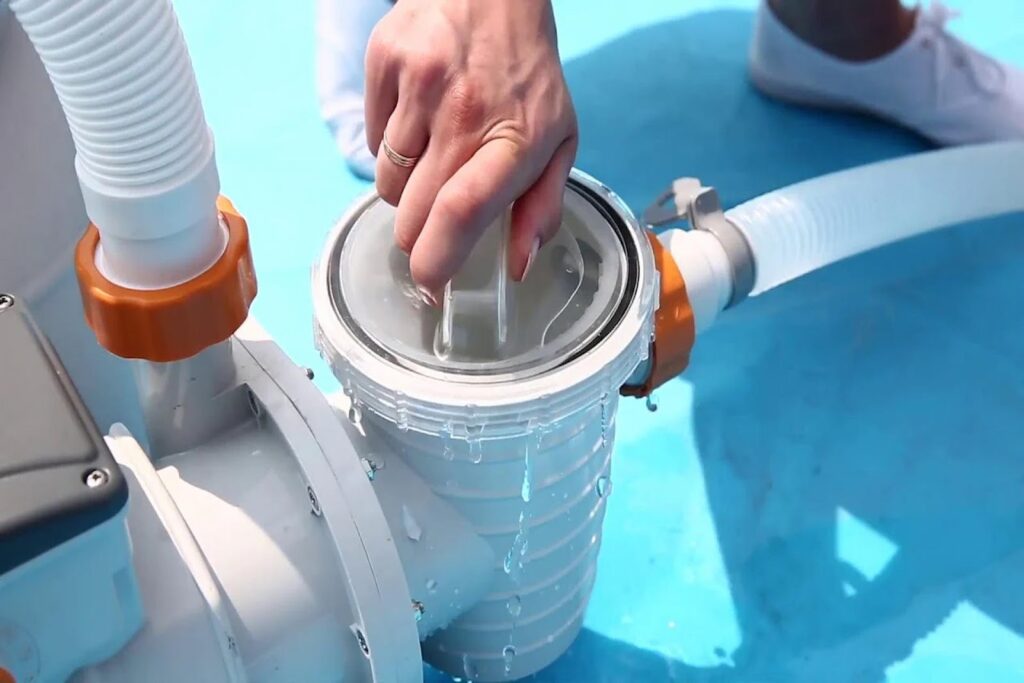Ever wonder why some swimming pools always look crystal clear while others quickly turn cloudy? The secret lies in a powerful little device that does all the heavy lifting behind the scenes—the swimming pool filter pump. Dive in as we explore why this equipment is the unsung hero of pool maintenance!
Many homeowners dream of a sparkling swimming pool. But what keeps that water looking so clean and inviting? The answer is simple: a swimming pool filter pump. Often overlooked, this vital piece of equipment plays a crucial role in maintaining water hygiene by circulating and filtering out debris, dirt, and harmful bacteria.
In this article, we’ll cover everything you need to know about swimming pool filter pumps—from how they work, the different types available, maintenance tips, and how to choose the right one for your pool. Whether you’re a new pool owner or looking to upgrade your current system, this guide covers you.
What Is a Swimming Pool Filter Pump?
A swimming pool filter pump is a device designed to pull water from the pool, push it through a filter, and return it clean and clear. It acts as the heart of your pool’s circulation system, ensuring consistent water movement to prevent stagnation and buildup of contaminants.
Why It Matters:
- Prevents algae growth and cloudy water
- Enhances the effectiveness of pool chemicals
- Improves swimmer safety by removing harmful particles
- Prolongs the life of your pool and equipment
How Does a Swimming Pool Filter Pump Work?
The process is straightforward but effective:
- Suction: The pump draws water from the pool via skimmers and main drains.
- Filtration: Water passes through a filtration system where dirt, leaves, and other particles are trapped.
- Return: The filtered water is pumped back into the pool through return jets.
This continuous cycle keeps the water in motion and helps maintain balanced chemical levels.
Types of Swimming Pool Filter Pumps
Choosing the right pump depends on your pool’s size, budget, and maintenance preferences. Here are the most common types:
1. Single-Speed Pumps
- Operates at one constant speed
- Budget-friendly
- Higher energy consumption
2. Dual-Speed Pumps
- Offers low and high-speed settings
- More energy-efficient than single-speed
- Ideal for smaller to medium-sized pools
3. Variable-Speed Pumps
- Allows you to adjust speed for efficiency
- Energy-saving and quieter
- Higher upfront cost but long-term savings
4. Solar-Powered Pumps
- Eco-friendly and low operating cost
- Best for sunny climates
- Dependent on weather conditions
Types of Pool Filters Used with Pumps
The filter part of the swimming pool filter pump is just as important. There are three main types:
- Sand Filters: Easy to use and affordable. Sand traps debris but needs backwashing.
- Cartridge Filters: More efficient at capturing small particles. Easy to clean but needs frequent replacements.
- Diatomaceous Earth (DE) Filters provide the best filtration, capturing even microscopic debris. They require careful handling and maintenance.
Signs Your Filter Pump Needs Maintenance or Replacement
Even the best filter pump won’t last forever. Here are signs to watch for:
- Weak water flow
- Unusual noises (grinding, screeching)
- Dirty water despite regular chemical use
- Visible leaks or cracks
- Increased electricity bills
How to Maintain Your Swimming Pool Filter Pump
Keeping your pump in top condition ensures it works efficiently. Here are some maintenance tips:
Regular Maintenance Checklist:
- Clean the pump basket weekly
- Check for debris in the skimmer and filter.
- Monitor water pressure for irregularities
- Lubricate o-rings to prevent wear
- Inspect and replace worn-out seals or hoses.
How to Choose the Right Swimming Pool Filter Pump
Before purchasing, consider these factors:
1. Pool Size
A larger pool requires a more powerful pump. Look at gallons per minute (GPM) ratings and choose one that matches your pool volume.
2. Pump Speed
Variable-speed pumps offer better efficiency but cost more initially.
3. Filter Compatibility
Ensure the pump fits with your existing filter or plan to upgrade both together.
4. Energy Efficiency
Look for ENERGY STAR-rated models to save on electricity.
5. Noise Level
Some pumps are quieter than others—significant for residential settings.
Benefits of Using a Quality Swimming Pool Filter Pump
Still on the fence? Here’s why investing in a good pump makes sense:
- Cleaner, safer water
- Reduced chemical use
- Lower maintenance costs
- Extended equipment life
- More enjoyable swimming experience
Common Pool Pump Mistakes to Avoid
Even seasoned pool owners can make these mistakes:
- Running the pump for too few hours per day
- Skipping regular maintenance
- Choosing the wrong size pump
- Ignoring strange sounds or performance drops
- Not winterising the pump in cold climates.
Avoiding these pitfalls can save you from costly repairs or water quality issues.
Expert Tips for Pool Owners
Here are a few pro tips to get the most out of your swimming pool filter pump:
- Run the pump for 8–12 hours daily, especially during peak summer.
- Use a pool cover when not in use to reduce debris and pump load.
- Install a timer to manage energy use efficiently.
- Upgrade to a variable-speed pump for long-term energy savings.
FInal Thoughts
A swimming pool filter pump isn’t just another accessory—it’s essential equipment for anyone serious about maintaining clean, safe, and crystal-clear pool water. From filtering out harmful debris to enhancing the effectiveness of chemicals, the pump does the heavy lifting that keeps your pool inviting.
Whether installing a new system or replacing an old one, choosing the right pump and maintaining it well can transform your pool experience. Think of it as the silent guardian of your backyard oasis—quietly working to ensure your next swim is perfect.






